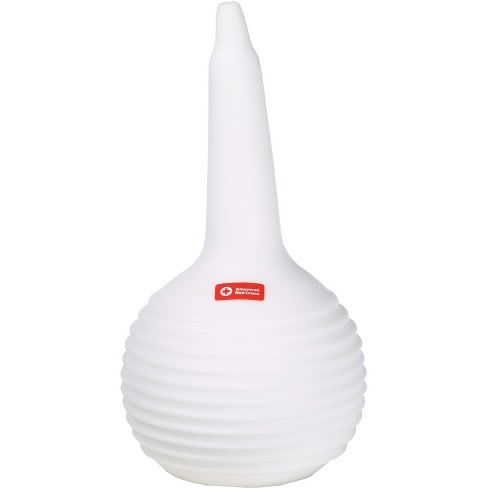Everything You Need to Know About Nasal Aspirators for Newborns
Hello, wonderful parents! Having a tiny bundle of joy at home can bring immeasurable happiness, but it also comes with its share of new challenges and learning experiences. One such challenge is dealing with your newborn’s nasal congestion—one of the most common issues for little ones. Fear not, because today, we’re diving into the magical world of nasal aspirators designed just for newborns.
Why Do Newborns Get Congested?
Newborns have very tiny nasal passages that can easily become congested. This can happen due to several reasons such as dry air, colds, or allergies. Since babies primarily breathe through their noses, keeping these pathways clear is essential for feeding and a good night’s sleep—for both you and your baby!
What is a Nasal Aspirator?
A nasal aspirator is a device that’s used to clear a baby’s stuffed nose. It’s designed to be gentle enough for a newborn’s delicate nasal passages but effective enough to remove the mucus, enabling your little one to breathe easier.
Types of Nasal Aspirators
- Bulb syringe: The traditional bulb syringe is commonly found in the hospital take-home kit. It’s a squeezable bulb with a narrow tip designed to suction out mucus from your baby’s nose.
- Oral suction aspirator: This type allows you to use your own suction to draw mucus out of your baby’s nose into a tube where you control the suction strength.
- Electric aspirator: These battery-operated aspirators provide continuous suction at the touch of a button, which can be more comfortable for some parents.
Choosing the Right Nasal Aspirator for Your Baby
When selecting a nasal aspirator, keep these factors in mind:
- Safety: Look for an aspirator that is BPA and Phthalate free.
- Ease of use: The aspirator should be easy for you to operate, especially in the middle of the night when you’re half asleep.
- Cleanability: Choose one that can be easily and thoroughly sanitized to prevent the spread of germs.
- Comfort: It should be gentle on your baby’s sensitive nasal passages.
- Effectiveness: Read reviews and see what other parents are saying about its effectiveness.
Safe Usage of Nasal Aspirators
Before you go ahead and use the nasal aspirator, there are a few key points to remember:
- Always read the instruction manual thoroughly.
- Use saline drops to loosen the mucus prior to suctioning.
- Be gentle—too much suction can irritate your baby’s nose.
- Limit the use of the aspirator to prevent any possible irritation.
- Keep your baby’s head still during suction, but never force it.
- Clean the aspirator after each use to maintain hygiene.
Now that we’ve covered the basics, you’re ready to tackle your baby’s stuffy nose like a pro! But hang on, there’s more to learn. We’ll go through the step-by-step process of safely and effectively using a nasal aspirator to ensure your little one can breathe comfortably and without any fuss.
Stay tuned for our detailed walk-through, and remember, your baby’s comfort and health are paramount. By equipping yourself with the right knowledge and tools, you’ll be prepared for those stuffy-nosed days and nights, ensuring that both parent and baby can breathe a little easier. Keep smiling, because with every new experience comes great bonding moments with your precious newborn. Let’s continue on this journey together!

5 Essential Tips for Preparing to Use a Nasal Aspirator on Your Newborn
Greetings, amazing caretakers! Before we step into the action of using a nasal aspirator, let’s ensure we’re fully prepared for what’s ahead. Here are five things you should know in order to tackle nasal congestion with confidence and care:
1. Understand When to Use a Nasal Aspirator
It’s essential to recognize the signs that your baby might need some help with congestion. Look for:
- Difficulty breathing through their nose
- Sniffling or snorting sounds
- Challenges with feeding or sleeping due to stuffiness
If you observe these symptoms, it might be time to gently use a nasal aspirator.
2. Create a Calm Environment
Babies pick up on your energy, so stay calm and collected. Make the room comfortable and play a soft lullaby if it helps to soothe your baby. A relaxed atmosphere will make the process smoother for both of you.
3. Have Everything You Need at Hand
Gathering your tools in advance prevents any mid-procedure scrambles. You’ll need:
- The nasal aspirator
- Saline drops to loosen the mucus
- Clean tissues or wipes
- A washcloth for any spills or drips
- A small bowl with warm water for cleaning the aspirator afterward
4. Position Your Newborn Properly
Gently cradle your baby in a comfortable position before starting. You can place them on your lap with their head tilted slightly back. Support their head and don’t rush; take a moment to ensure your little one feels secure.
5. Practice Good Hygiene
Before and after using the nasal aspirator, wash your hands thoroughly to prevent the spread of germs. Also, ensure that the device is clean and dry before use. Hygiene is key to keeping your baby healthy.
With these preparations in place, using the nasal aspirator should be a breeze! Remember, a gentle touch and a dose of patience go a long way in ensuring your newborn’s comfort and safety. And of course, if you’re ever unsure about addressing your baby’s congestion, consult with your pediatrician for advice tailored to your little one’s needs.
Let’s embark on this healthcare adventure with positivity and preparedness. After all, as parents, we’re in this together, navigating the cozy (albeit sometimes sniffly) snuggles and caring moments that come with newborn care. Ready to learn more about how to apply these tips in real time? Follow along as we delve deeper into the world of nasal care for your most cherished tiny humans!
For more great articles please see here. For more information see here
Disclaimer
The articles available via our website provide general information only and we strongly urge readers to exercise caution and conduct their own thorough research and fact-checking. The information presented should not be taken as absolute truth, and, to the maximum extent permitted by law, we will not be held liable for any inaccuracies or errors in the content. It is essential for individuals to independently verify and validate the information before making any decisions or taking any actions based on the articles.




